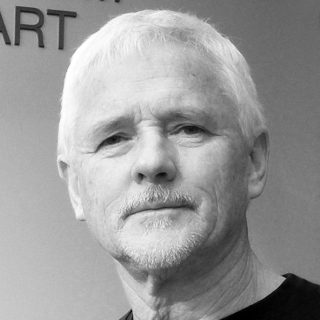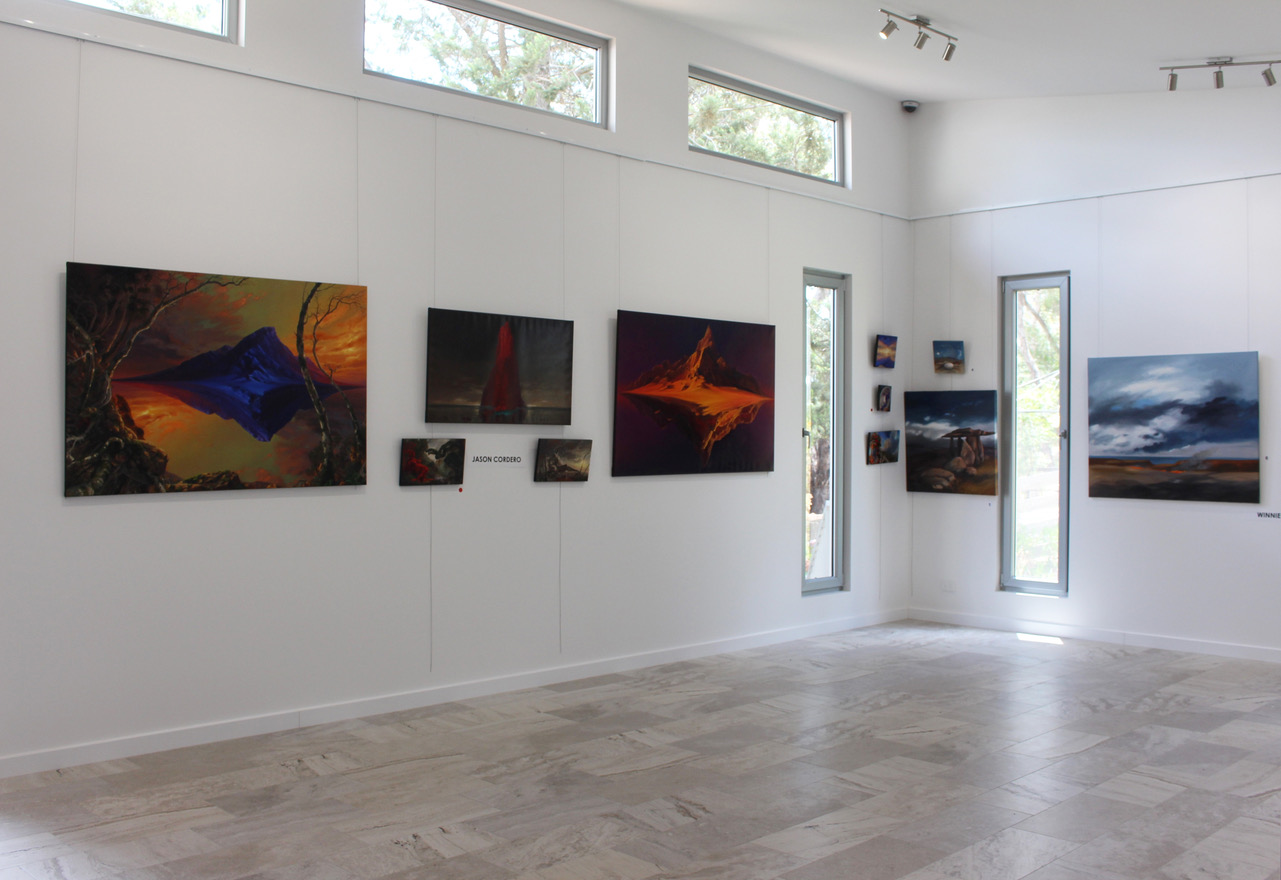
John Neylon
John Neylon is an award-winning art critic and the author of several books on South Australian artists including Hans Heysen: Into The Light (2004), Aldo Iacobelli: I love painting (2006), and Robert Hannaford: Natural Eye (2007).

Green shoots with the potential to lead to a more engaged arts community are appearing in the foothills.
The Adelaide Hills would seem a prime location for small to mid-sized art galleries. Converted churches, halls, retro-fitted shops and the like are seductive destinations for tourists and plains folk who like to mix a little visual art with wine and food and weekend markets.
Most of these outlets feature rotating displays of art and design by local and Adelaide-based artist/ designers. Motifs inspired by flora and fauna abound. Landscape is a gift that keeps on giving. Some sites like the Hahndorf Academy, Fabrik Arts and Heritage at Lobethal, and Aptos Cruz at Stirling present curated or thematic exhibitions.
Options unfold ‘down the hill’ including Flinders University Museum of Art, Centennial Park, Gallery M at Marion and community art spaces including Gallery 1 at the Mitcham Cultural Village. On the ‘outer rim’, sites including Gallery 1855 at Tea Tree Gully, the Murray Bridge Regional Gallery, Sauerbier House at Port Noarlunga and Signal Point Gallery at Goolwa, which offer a wide spectrum of art product and experiences. Add to this The Cedars at Hahndorf, which conducts the Heysen Sculpture Biennial, along with public access to the Heysen home and Hans and Nora’s studios. These sites and projects variously celebrate and and promote local artists and enrich cultural life by presenting work that extends and challenges the imagination.
The Mitcham Hills area (primarily The Park and Craigburn Wards) once had a high-profile art gallery, Studio 20 Craft Gallery, which made its mark on Adelaide’s art scene with a lively exhibitions program. A recent initiative, Kuoni Creative, on Main Road, which looked to be ticking all the boxes in terms of showcasing local talent and advocacy of creativity, has closed. The City of Mitcham’s projected plans for a community library and centre adjoining Waite Street Reserve include modest provision for art display. But that’s some time off – in the maybe baby box.
The Hills are home to a significant body of visual arts and design practitioners, many attracted to the area’s ambience and also proximity to the city.
This ‘Goldilocks’ character is an asset but without the catalysts to bring people together, this community of practitioners and arts supporters alike will remain fragmented and its growth potential unrealised. There are some green shoots appearing. The Council’s Public Arts Grants program is gaining traction.
Pop-up music events (live music in cafes, plant nurseries and bistros) are building regular audiences – as if you’d expect anything less from the home of the Hilltop Hoods! So where does that leave the visual arts? Well there’s a new kid on the block. It’s called Australian and International Arts (AIARTS), an arts business that sells and rents art and presents exhibitions within the broad areas of Contemporary, Aboriginal and International. It’s in Belair. It’s a dedicated art space – a purpose-designed visual art gallery in fact. And it’s in for the long haul.
The director and owner of Australian & International Arts is Angelika Tyrone. Her extensive experience in the arts industry, within Australia and internationally, includes working as lead developer of new programs in visual arts, photography and digital graphics, promoting artists and cultural events and managing projects across a diversity of media.
Curating has extended her experience in working with and representing Indigenous artists. The primary gallery space is large, has a high ceiling and is filled with light. Every feature of the building has been conceived with the display, storage and installation of modern to contemporary works in mind. This is a ‘by appointment’ space with exceptions. Tyrone has activated her plan to present three public access exhibitions a year. In the lead-up to 2020 there have been two exhibitions: Paintings from the Kimberley in Western Australia and Central Australia and, most recently, Diverse Responses to Landscape (Geoff Wilson, Winnie Pelz and Jason Cordero).
In 2020 the exhibition program will be: Views of Kathi Thanda – Lake Eyre, a photographic exhibition in March; a SALA exhibition, Innovation in depicting the land and human structures; and Art from Myanmar – Burma, in collaboration with a local restaurant.
There is a subtext to the programming. Tyrone considers that the relationship with land (Indigenous and otherwise) defines an Australian sense of identity. By aligning different artists (as in Diverse Responses) and particularly artists from diverse cultural backgrounds and perspectives, Tyrone believes that the art will reveal fresh narratives about this relationship.
Working outside of the constraints of art museum templates Tyrone considers that her ‘alignments’ will challenge and engage public audiences. She also sees considerable scope for public programming to enhance engagement, something this genre-flexible space will be able to accommodate. So anticipate exhibitions but also events, performances and celebrations of good food and wine. This is, in terms of the Mitcham Hills transitioning to a more switched on and engaged arts community, a serious green shoot and I wish it well.
Note: Opening hours may be subject to change in the wake of COVID-19 restrictions

John Neylon is an award-winning art critic and the author of several books on South Australian artists including Hans Heysen: Into The Light (2004), Aldo Iacobelli: I love painting (2006), and Robert Hannaford: Natural Eye (2007).